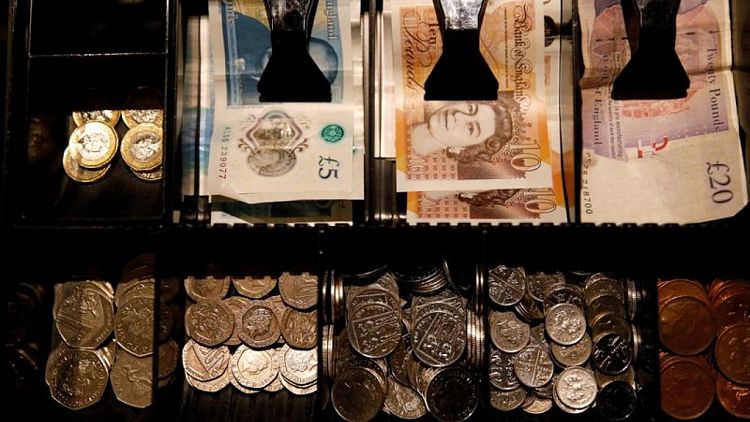By Ritvik Carvalho and Saikat Chatterjee
LONDON - The British pound's sudden surge on Tuesday around the time that daily foreign exchange benchmarks are calculated, coincided with an outsize spike in trading volumes, taking hourly flows to five times the average seen in the past week, Refinitiv data shows.
The move, which saw sterling jump 150 pips in the space of seven minutes -- from $1.3840 around 1453 GMT to $1.3890 by 1500 GMT on Tuesday -- puzzled many traders, and one said he had fielded several client calls asking for reasons behind the move.
The outsize move and trading volumes have grabbed attention because the fixing, which happens at 4:00 p.m. in London each weekday, is used to value trillions of dollars of assets worldwide.
On Tuesday, minutes before the "fix", sterling hit its highest against the dollar in more than a week. It had begun to creep up half an hour earlier but the bulk of the move began six minutes before 1500 GMT, Refinitiv data shows.
Sterling surges around daily FX fix https://fingfx.thomsonreuters.com/gfx/mkt/mypmnmbmrvr/GBP1.png
Trading volumes in the pound also surged, with around $1.1 billion changing hands in the hour around 1500 GMT -- five times the turnover recorded over similar periods in the past one week, according to Refinitiv data and more than twice the average hourly turnover so far this month.
It was the biggest hourly turnover since the final week of Nov. 20 2020, when Brexit talks between the United Kingdom and the European Union reached their final leg.
Traded volume https://fingfx.thomsonreuters.com/gfx/mkt/znvnedldypl/GBP2.png
The surge was notable because it was at odds with the market mood at the time: stock markets from Asia to Europe to Wall Street were in the red and broader currency market volatility was hovering near 2021 lows.
It also kindled memories of the $5.6 billion fine imposed on six banks in 2015 for rigging the foreign exchange benchmark used by asset managers and corporate treasurers to value their holdings, though there is no suggestion of any wrongdoing on this occasion.
Daily FX benchmark rates are calculated by Refinitiv, the owner of the 27-year old WM/R benchmark, by taking the median bid and offer rates over a five-minute period, according to a fact sheet on its website. It takes into account traded rates submitted by the Refinitiv Matching, EBS and Currenex platforms.
The companies did not immediately respond to requests for comment.
SUMMER
Traders said sterling could have been affected by a range of factors, including typically subdued summer months exacerbating the impact of an order.
John Goldie, FX dealer at Argentex said he had written to clients earlier in the week to inform them "we have prime set up for sharp sudden moves across the market, with summer trading, heading into month-end, COVID news seemingly changing constantly and a Fed meeting thrown in as well".
Another likely reason is that the fixing coincided with the release of British COVID-19 statistics - also at 1500 GMT - and which on Tuesday, showed a drop in daily new cases for a seventh straight day.
"The market is highly sensitive to the UK COVID situation given the degree of bad news priced in," said Viraj Patel, FX and global macro strategist at Vanda Research.
"Falling cases, and not too sharply rising hospitalisations, would be a sign of confidence in the UK's reopening experiment," he added.
Coming at a time when traders had just turned "short" on sterling, the news probably sufficed to boost the currency, several traders interviewed by Reuters said. [IMM/FX] [CFTC/]
"[It] was a popular narrative selling sterling recently, for a host of reasons like perceived coronavirus problems and Northern Ireland tensions, most of which were wrong so I think shorts gave up," one trader said.



